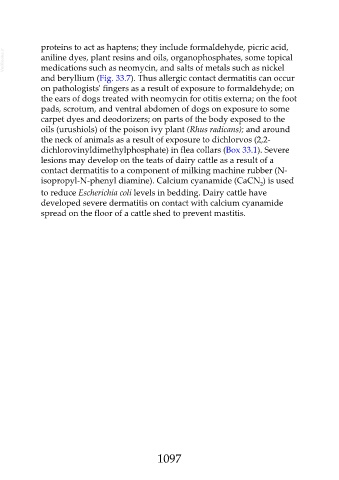Page 1097 - Veterinary Immunology, 10th Edition
P. 1097
proteins to act as haptens; they include formaldehyde, picric acid,
VetBooks.ir aniline dyes, plant resins and oils, organophosphates, some topical
medications such as neomycin, and salts of metals such as nickel
and beryllium (Fig. 33.7). Thus allergic contact dermatitis can occur
on pathologists' fingers as a result of exposure to formaldehyde; on
the ears of dogs treated with neomycin for otitis externa; on the foot
pads, scrotum, and ventral abdomen of dogs on exposure to some
carpet dyes and deodorizers; on parts of the body exposed to the
oils (urushiols) of the poison ivy plant (Rhus radicans); and around
the neck of animals as a result of exposure to dichlorvos (2,2-
dichlorovinyldimethylphosphate) in flea collars (Box 33.1). Severe
lesions may develop on the teats of dairy cattle as a result of a
contact dermatitis to a component of milking machine rubber (N-
isopropyl-N-phenyl diamine). Calcium cyanamide (CaCN ) is used
2
to reduce Escherichia coli levels in bedding. Dairy cattle have
developed severe dermatitis on contact with calcium cyanamide
spread on the floor of a cattle shed to prevent mastitis.
1097

